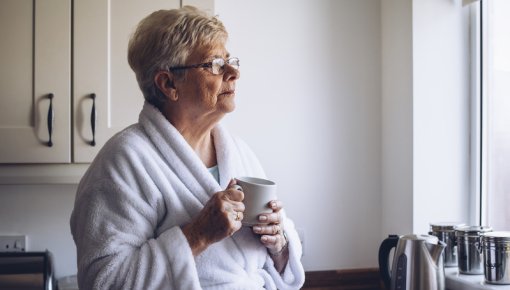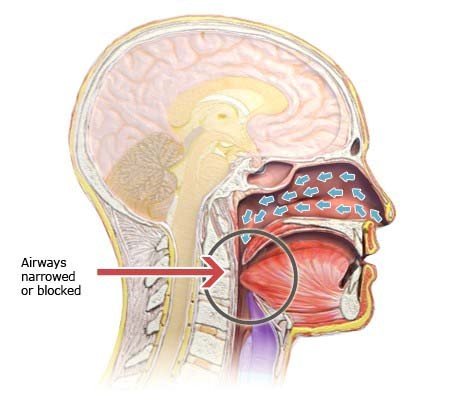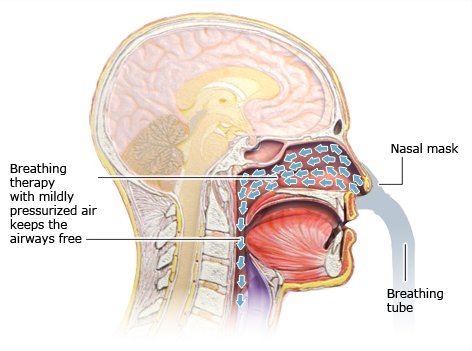Araghi MH, Chen YF, Jagielski A et al. Effectiveness of lifestyle interventions on obstructive sleep apnea (OSA): systematic review and meta-analysis. Sleep 2013; 36(10): 1553-1562, 1562A-1562E.
Askland K, Wright L, Wozniak DR et al. Educational, supportive and behavioural interventions to improve usage of continuous positive airway pressure machines in adults with obstructive sleep apnoea. Cochrane Database Syst Rev 2020; (4): CD007736.
Balk EM, Moorthy D, Obadan NO et al. Diagnosis and Treatment of Obstructive Sleep Apnea in Adults (AHRQ Comparative Effectiveness Reviews; No. 32). 2011.
Barnes H, Edwards BA, Joosten SA et al. Positional modification techniques for supine obstructive sleep apnea: A systematic review and meta-analysis. Sleep Med Rev 2017; 36: 107-115.
Deutsche Gesellschaft für Schlafforschung und Schlafmedizin (DGSM). Nicht erholsamer Schlaf/Schlafstörung - Schlafbezogene Atmungsstörungen (S3-Leitlinie, in Überarbeitung). AWMF-Registernr.: 063-001. 2020.
Gao YN, Wu YC, Lin SY et al. Short-term efficacy of minimally invasive treatments for adult obstructive sleep apnea: A systematic review and network meta-analysis of randomized controlled trials. J Formos Med Assoc 2019; 118(4): 750-765.
Giles TL, Lasserson T, J., Smith B et al. Continuous positive airways pressure for obstructive sleep apnoea in adults. Cochrane Database Syst Rev 2006; (3): CD001106.
Kennedy B, Lasserson TJ, Wozniak DR et al. Pressure modification or humidification for improving usage of continuous positive airway pressure machines in adults with obstructive sleep apnoea. Cochrane Database Syst Rev 2019; (12): CD003531.
Kim Y, Koo YS, Lee HY et al. Can Continuous Positive Airway Pressure Reduce the Risk of Stroke in Obstructive Sleep Apnea Patients? A Systematic Review and Meta-Analysis. PLoS One 2016; 11(1): e0146317.
Labarca G, Saavedra D, Dreyse J et al. Efficacy of CPAP for Improvements in Sleepiness, Cognition, Mood, and Quality of Life in Elderly Patients With OSA: Systematic Review and Meta-analysis of Randomized Controlled Trials. Chest 2020; 158(2): 751-764.
Mason M, Welsh EJ, Smith I. Drug therapy for obstructive sleep apnoea in adults. Cochrane Database Syst Rev 2013; (5): CD003002.
Srijithesh PR, Aghoram R, Goel A et al. Positional therapy for obstructive sleep apnoea. Cochrane Database Syst Rev 2019; (5): CD010990.
Thomasouli MA, Brady EM, Davies MJ et al. The impact of diet and lifestyle management strategies for obstructive sleep apnoea in adults: a systematic review and meta-analysis of randomised controlled trials. Sleep Breath 2013; 17(3): 925-935.
Timkova V, Nagyova I, Reijneveld SA et al. Quality of life of obstructive sleep apnoea patients receiving continuous positive airway pressure treatment: A systematic review and meta-analysis. Heart Lung 2020; 49(1): 10-24.
Wang X, Zhang Y, Dong Z et al. Effect of continuous positive airway pressure on long-term cardiovascular outcomes in patients with coronary artery disease and obstructive sleep apnea: a systematic review and meta-analysis. Respir Res 2018; 19(1): 61.
Yu J, Zhou Z, McEvoy RD et al. Association of Positive Airway Pressure With Cardiovascular Events and Death in Adults With Sleep Apnea: A Systematic Review and Meta-analysis. JAMA 2017; 318(2): 156-166.
IQWiG health information is written with the aim of helping people understand the advantages and disadvantages of the main treatment options and health care services.
Because IQWiG is a German institute, some of the information provided here is specific to the German health care system. The suitability of any of the described options in an individual case can be determined by talking to a doctor. informedhealth.org can provide support for talks with doctors and other medical professionals, but cannot replace them. We do not offer individual consultations.
Our information is based on the results of good-quality studies. It is written by a team of health care professionals, scientists and editors, and reviewed by external experts. You can find a detailed description of how our health information is produced and updated in our methods.



